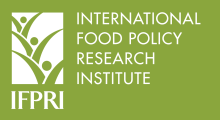Resource information
Iron deficiency anemia (IDA) affects more than 3.5 people in the developing world. More than half of pregnant women (56 percent) and 44 percent of nonpregnant women are anemic (ACC/SCN 2000). IDA contributes to approximately 20 percent of maternal deaths in Africa and Asia (Ross and Thomas 1996). In Africa alone, some 20,000 maternal deaths per year could be prevented with anemia treatment. Poor diet quality and low bioavailability of dietary iron are important factors contributing to iron deficiency anemia (IDA), so one proposed solution to IDA consists of food-based interventions designed to improve people’s diets. Yet little has been known about the magnitude of the effects of various components of the diet in reducing IDA under actual living conditions in rural areas. Can food-based interventions be successful in reducing IDA? Will such interventions be cost-effective compared with alternative interventions such as supplementation?


